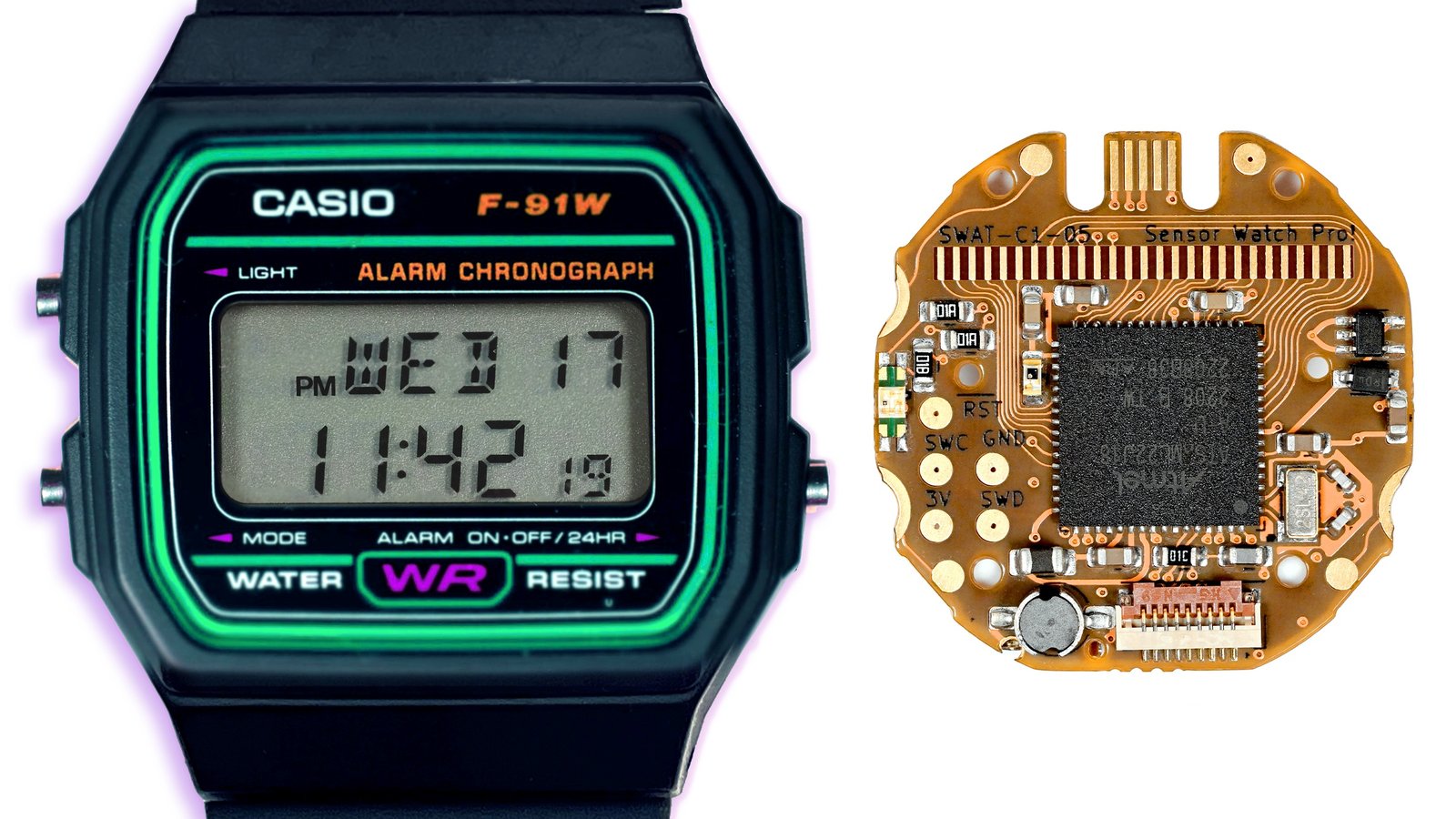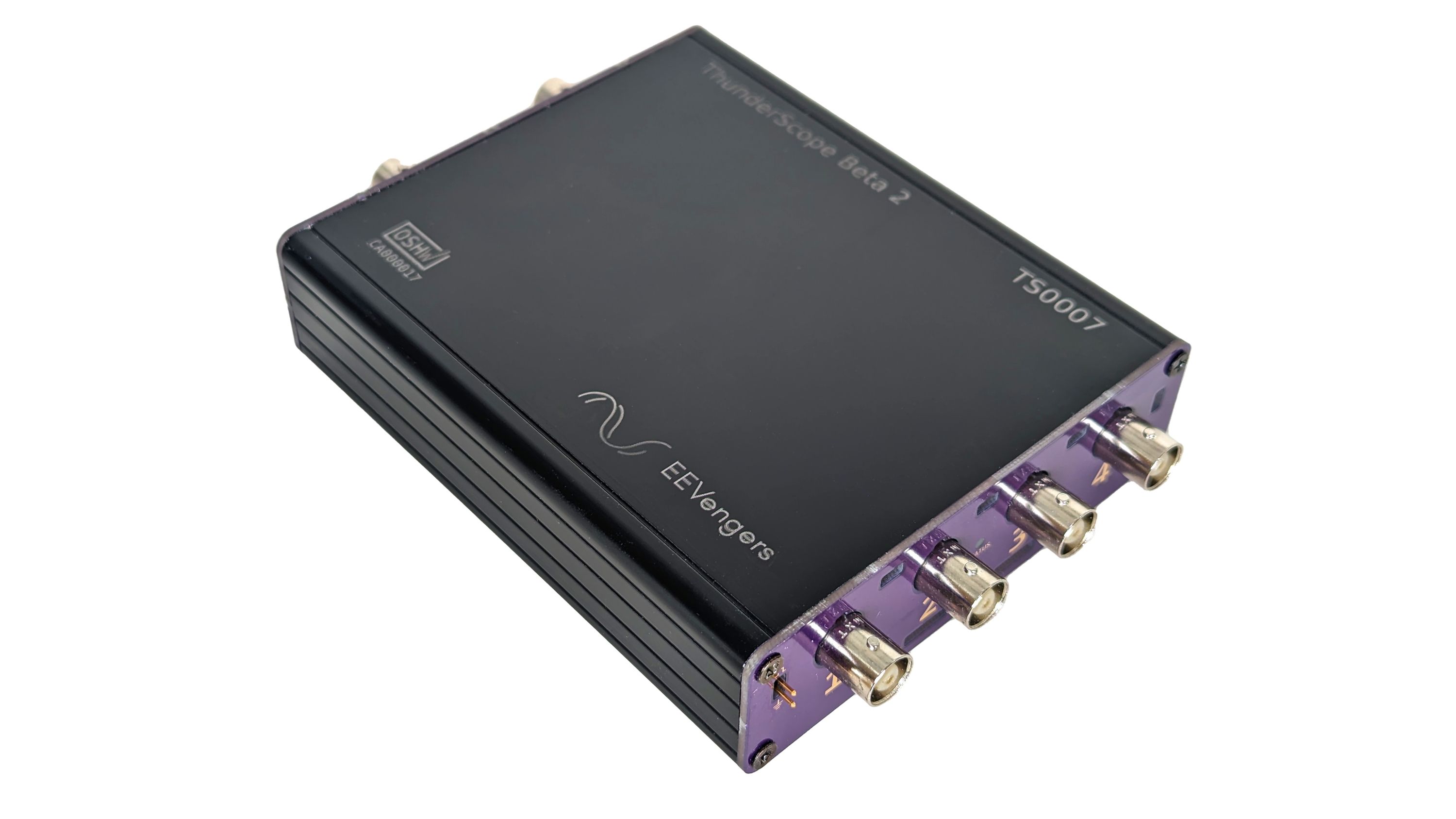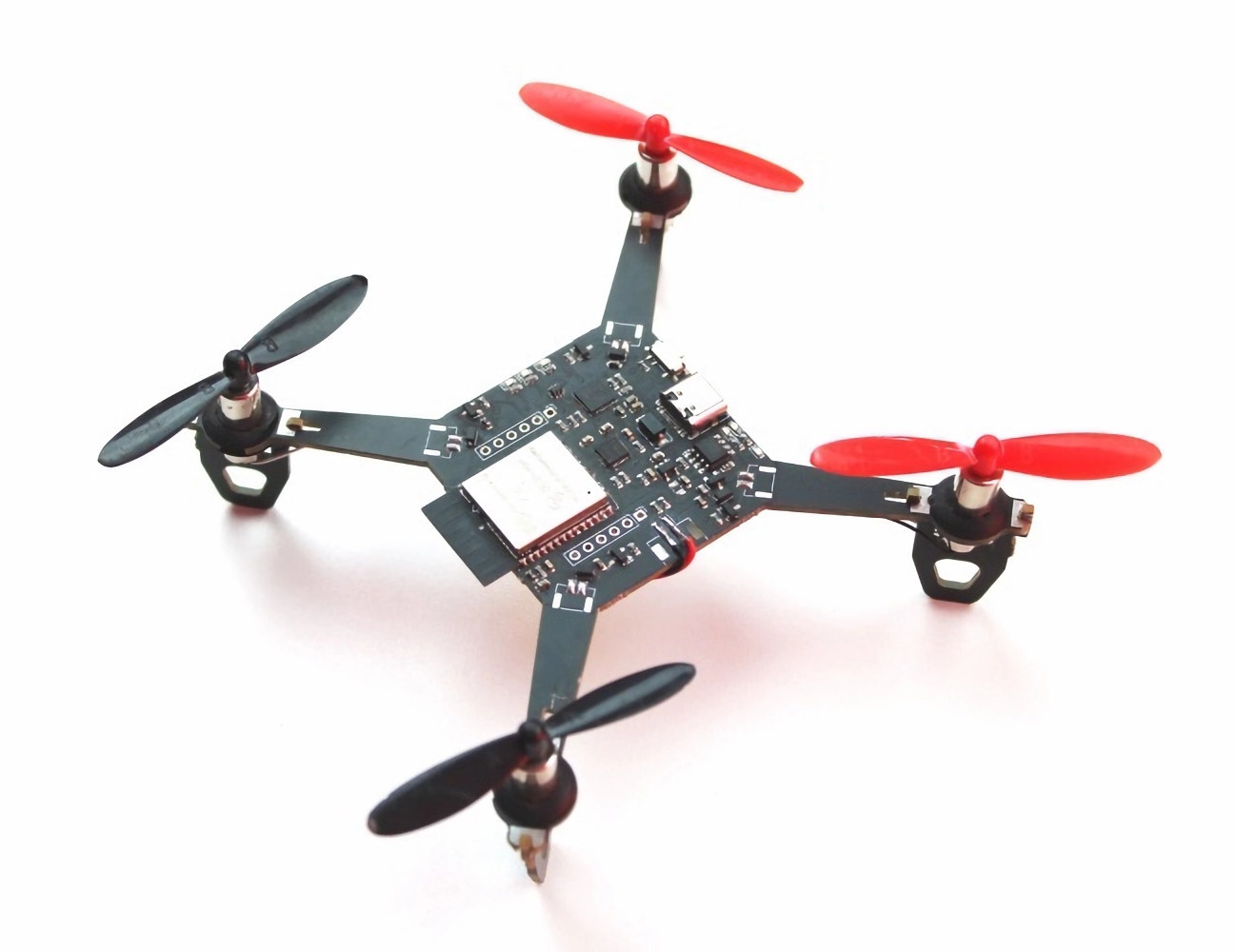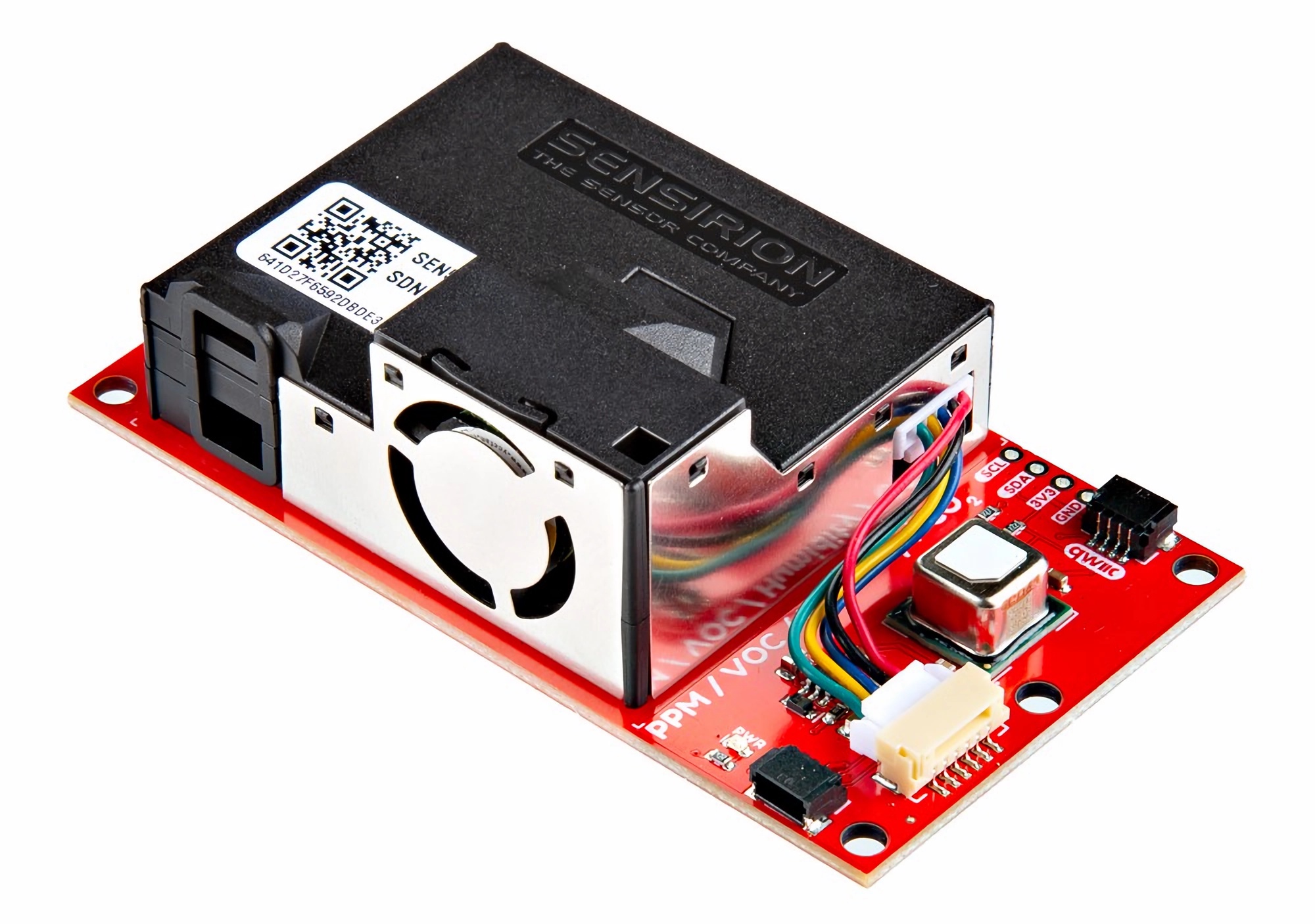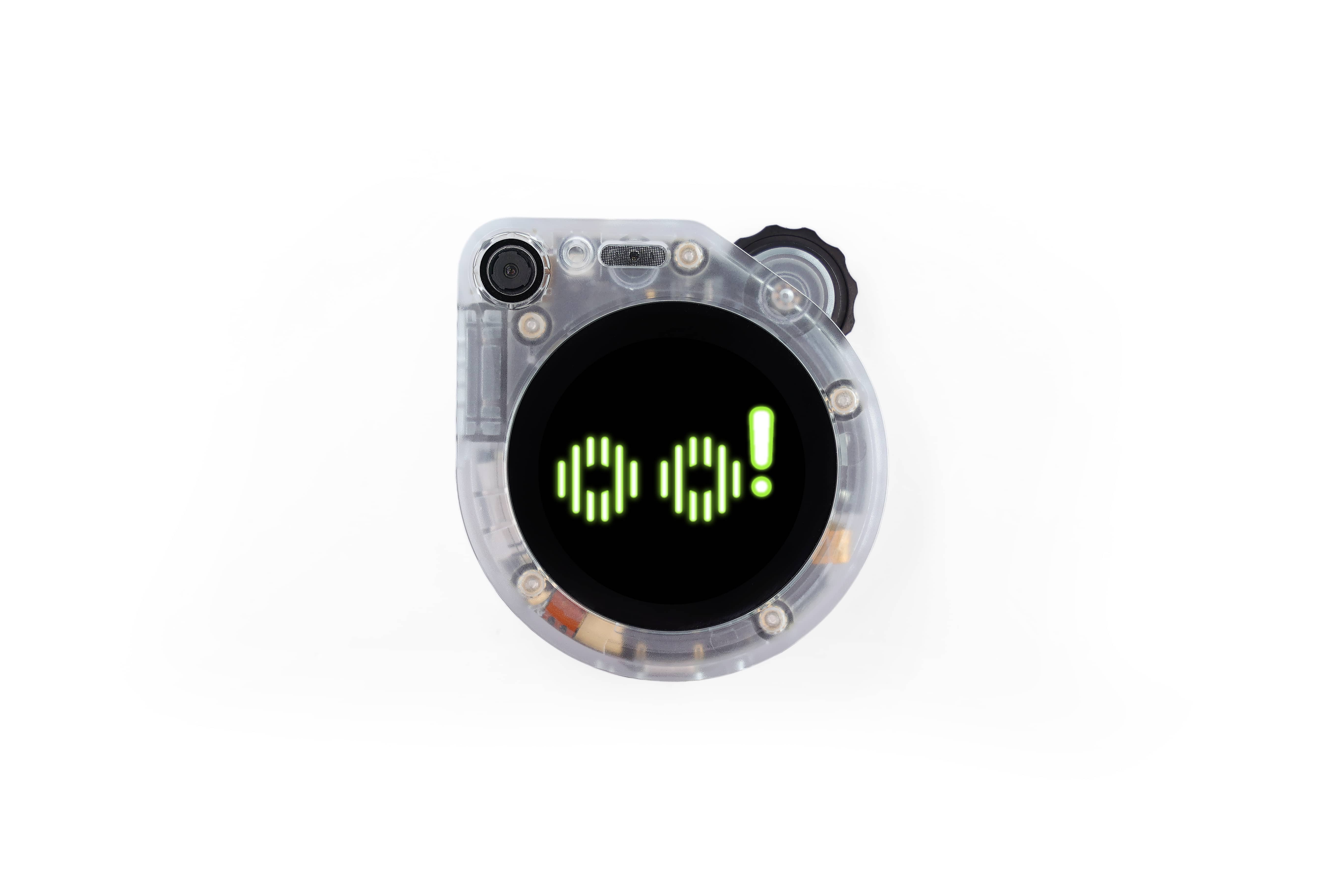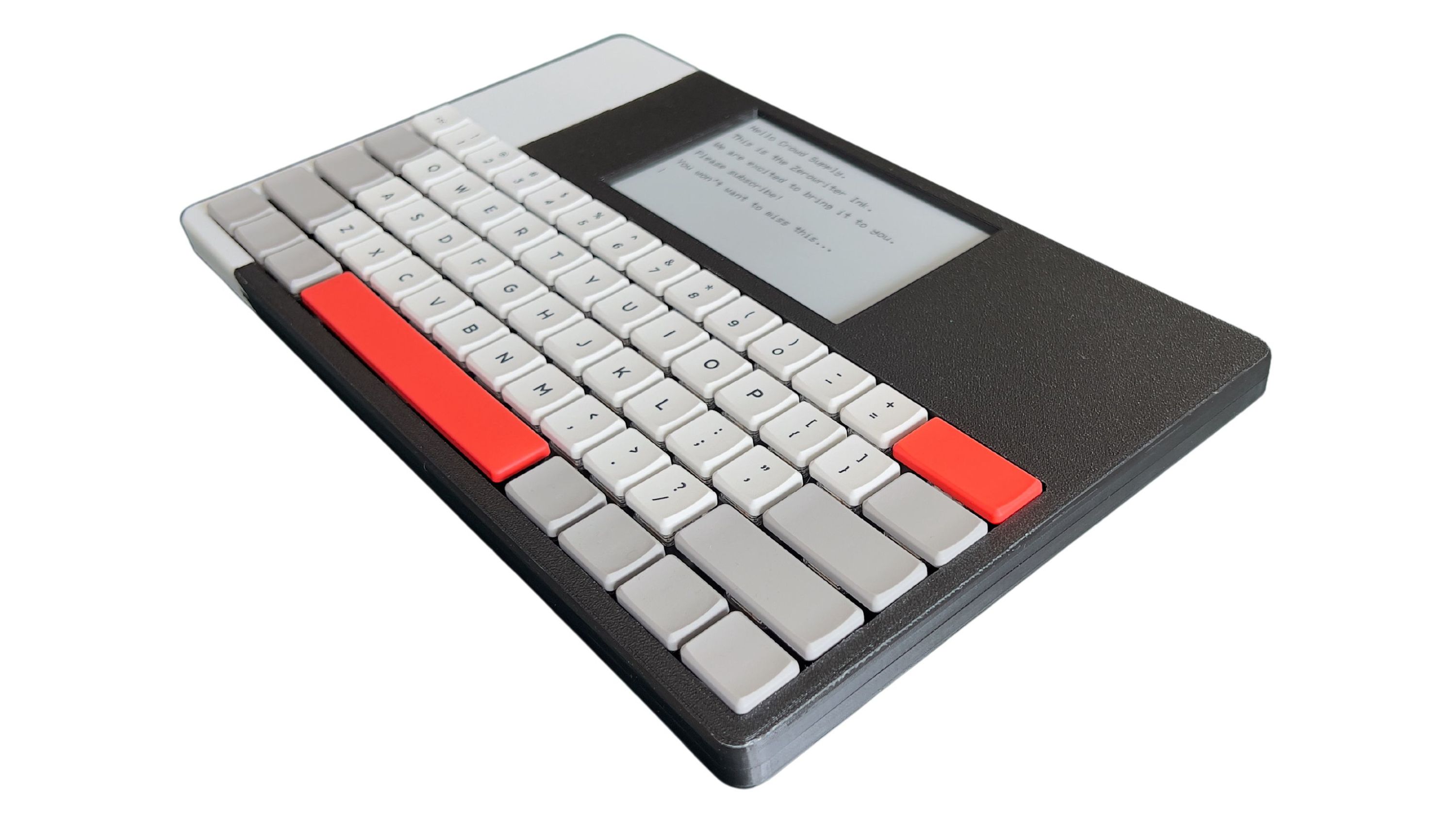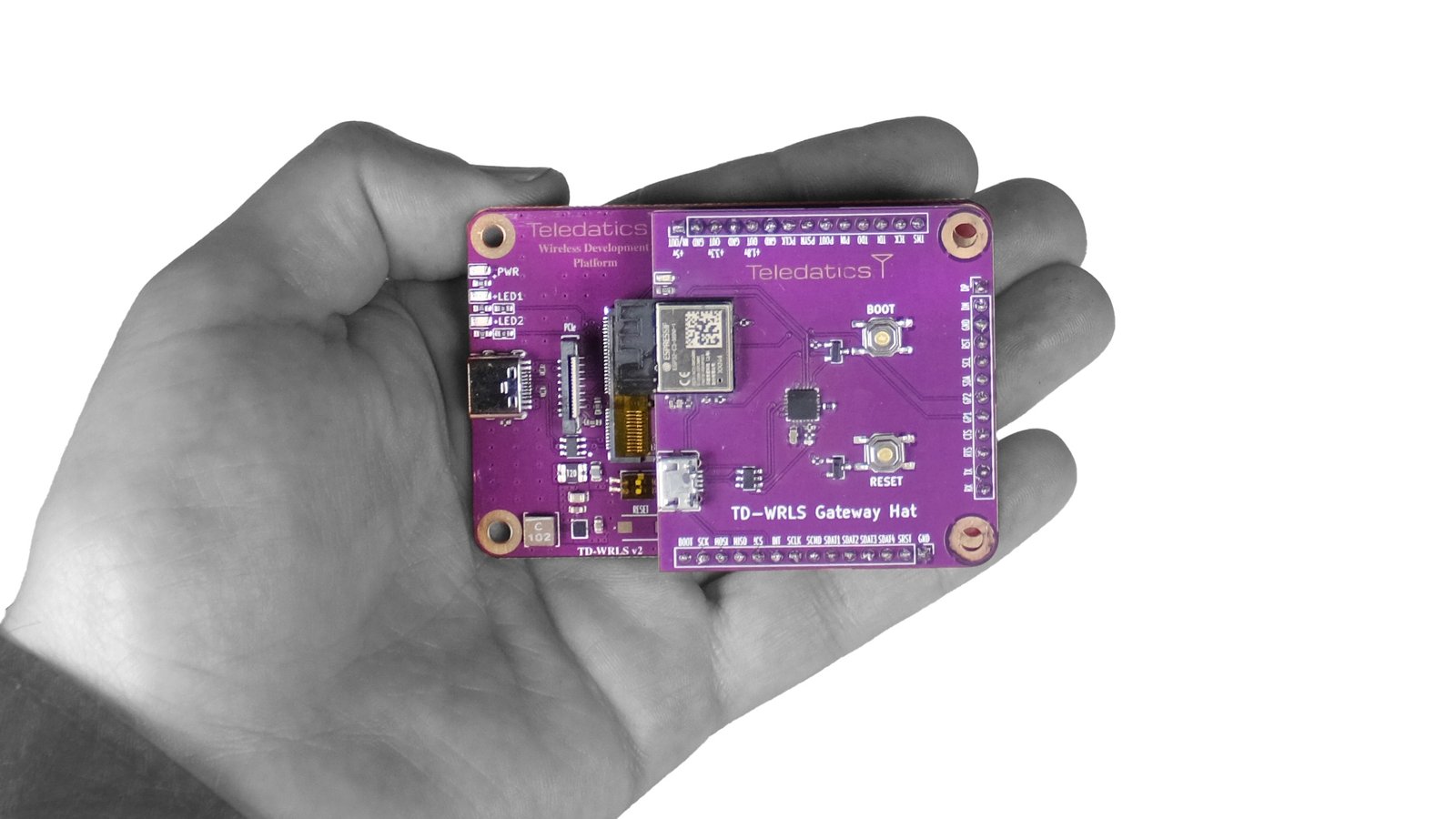Olimex RVPC is one Euro RISC-V computer powered by a WCH CH32V003 RISC-V microcontroller and equipped with a VGA port for video output and a PS/2 connector to connect a keyboard. You won’t be able to do much with this device as an end-user, but it does not matter since the RVPC open-source hardware board mostly targets the education market and is offered as a kit to be soldered to lower the selling price and to serve as a soldering learning kit. Olimex RVPC specifications: MCU – WCH CH32V003 32-bit RISC-V2A microcontroller up to 48 MHz with 2KB SRAM, 16KB flash (SOP8 package with 6x GPIOs) Video Output – VGA connector (3x GPIO used for Vsync, HSync, and RGB) Keyboard port – PS/2 connector (2x GPIO used) Programmer port – 2-pin header for CH32V003 programming through a board such as ESP32-S2-DevKit-LiPo-USB Misc – Buzzer (1x GPIO) and Red power LED […]
Sensor Watch Pro turns the Casio F-91W into a modular Arm Cortex M0+-based digital “smartwatch” (Crowdfunding)
Joey Castillo of Oddly Specific Objects has released a follow-up to the Sensor Watch, aptly named Sensor Watch Pro. The Sensor Watch Pro remains a board swap for the classic Casio F-91W or A158W digital watch that replaces the original quartz movement with the low-power ARM Cortex-M0+ microcontroller. The Sensor Watch Pro retains features from the Sensor Watch Lite and comes with a few upgrades such as a louder piezo buzzer, an RGB LED, an infrared light sensor, and a completely soldering-free experience. The new watch integrates a custom-fabricated metal spring connector that previously had to be manually soldered after purchase. We had also looked at other hackable watches in the past, such as Bangle.js, Bangle.js 2, and Watchy. Buyers can opt for a custom LCD that extends the number of segments available from 72 segments to 92 segments. It comes with an onboard temperature sensor and can be connected […]
ThunderScope is an open-source Thunderbolt and PCIe oscilloscope with a 1 GS/s data sampling rate (Crowdfunding)
The ThunderScope is an open-source, Thunderbolt/USB4 and PCIe oscilloscope with a sampling rate of up to 1 GS/s. It is portable, presents an affordable, open-source alternative to expensive bench-top and PC-based scopes, and delivers a higher sampling rate than most USB oscilloscopes. ThunderScope streams sample data to your computer for processing and analysis, unlike traditional oscilloscopes which “are limited by their built-in processing capabilities and cramped user interfaces.” It uses the fastest available interface, Thunderbolt, to stream data, allowing it to use your computer’s full potential. ThunderScope is “the only scope that will get better every time you upgrade your computer.” The Thunderbolt oscilloscope is based on AMD’s Artix 7 XC7A35T-2CSG325C FPGA. It supports up to four channels and a full analog bandwidth of 500 MHz (with the anti-aliasing filter disabled). It doesn’t require an external power source, as it is powered via the Thunderbolt port. It comes in a […]
LiteWing DIY ESP32 drone costs about $12 to make
Circuit Digest’s LiteWing is a low-cost DIY drone controlled by an ESP32 module, based on a custom PCB and off-the-shelf parts that costs around 1000 Rupees to make, or $12 at today’s exchange rate. The DIY ESP32 drone was designed as a low-cost alternative to more expensive DIY drones that typically cost close to $70. The result is a WiFi drone that fits in the palm and controlled over WiFi using a smartphone. Interestingly it does not include any 3D printed parts as the PCB forms the chassis of the device. DIY ESP32 drone key features and components Wireless module – ESP32-WROOM-32 for WiFi control using a smartphone. Storage – MicroSD card slot Sensors – MPU6050 IMU for stability control. Propulsion 4x 720 coreless motors 2x 55mm propeller type A(CW) 2x 55mm propeller type B(CCW) USB – 1x USB-C port for charging and programming (via CP2102N) Power Management 1300mAh Li-Ion […]
SparkFun’s $125 “Indoor Air Quality Combo Sensor” combines the SCD41 and SEN55 environmental sensors
SparkFun has released a new air quality multi-sensor board, the Indoor Air Quality Combo Sensor, which integrates the SCD41 and SEN55 sensors from Sensirion for measuring carbon dioxide, volatile organic compounds (VOCs), particulate matter, relative humidity, and temperature. The air quality multi-sensor board simplifies power management for the two sensors via onboard DC voltage conversion and allows a single Qwiic connection for power and communication. It features two Qwiic connectors and a 0.1”-space through-hole header for I2C and power. The board is not a complete solution for indoor air quality monitoring. It has to be connected to a Qwiic-enabled microcontroller such as SparkFun Thing Plus Matter, DataLogger IoT, and the ESP32 Qwiic Pro Mini. Users can install the required Arduino libraries — the Arduino Core library, Sensirion I2C SEN5x, and SparkFun SCD4x — either via the Arduino library manager or directly from SparkFun. The device is open-source, with hardware files, […]
The SenseCAP Watcher is a voice-controlled, physical AI agent for LLM-based space monitoring (Crowdfunding)
Seeed Studio has launched a Kickstarter campaign for the SenseCAP Watcher, a physical AI agent capable of monitoring a space and taking actions based on events within that area. Described as the “world’s first Physical LLM Agent for Smarter Spaces,” the SenseCAP Watcher leverages onboard and cloud-based technologies to “bridge the gap between digital intelligence and physical applications.” The SenseCAP Watcher is powered by an ESP32-S3 microcontroller coupled with a Himax WiseEye2 HX6538 chip (Cortex-M55 and Ethos-U55 microNPU) for image and vector data processing. It builds on the Grove Vision AI V2 module and comes in a form factor about one-third the size of an iPhone. Onboard features include a camera, touchscreen, microphone, and speaker, supporting voice command recognition and multimodal sensor expansion. It runs the SenseCraft software suite which integrates on-device tinyML models with powerful large language models, either running on a remote cloud server or a local computer […]
Zerowriter Ink is an open-source, ESP32-S3-based e-paper word processor (Crowdfunding)
Zerowriter Ink is an e-paper word processor for writers interested in an open-source, distraction-free writing tool built around the ESP32-S3 wireless microcontroller. It features a customizable, mechanical keyboard with low-profile Kailh Choc switches and a second-edition Inkplate 5 e-paper display from Soldered Electronics. The Zerowriter Ink is a compact, dedicated writing tool that can be tossed in a backpack and taken on the road. It is designed as an open-source, customizable alternative to other portable word processors like the Alphasmart Neo and the Pomera DM30. It builds on the first ZeroWriter project but comes fully assembled. The keyboard is hot-swappable, with a US-English layout and printed legends. The onboard Inkplate 5 e-paper display is powered by an ESP32-S3 microcontroller with support for Wi-Fi 4 and BLE 4. It also comes with a 5,000mAh LiPo battery that can last for several weeks of daily use or a month of standby on […]
Teledatics HaloMax Wi-Fi HaLow LGA or M.2 module supports over 1000 clients, have been tested at a 100+km range (Crowdfunding)
Teledatics has launched a crowdfunding campaign for the TD-HALOM HaloMax Wi-Fi HaLow module available in LGA and M.2 form factors for long-range and low-power connectivity, as well as HaLow development boards based on the module and various daughterboards for expansion. The wireless module, powered by Newracom’s NRC7394 SoC, is the product of a collaboration between Newracom and Teledatics. According to Zac Freeman, VP of Marketing & Sales at Newracom, the HaloMax module is “the highest output power Wi-Fi HaLow module available on the market. The Teledatics TD-HALOM module transmits at the highest allowable FCC power output and offers a Maximum Range HaLow solution.” Earlier this year, Teledatics broke the record for the longest distance for a Wi-Fi HaLow connection using the HaloMax wireless module and TE Connectivity Yagi antennas. Two Raspberry Pi 4 Model B units were able to communicate over a distance of 106km between Mount Greylock and Mount […]



